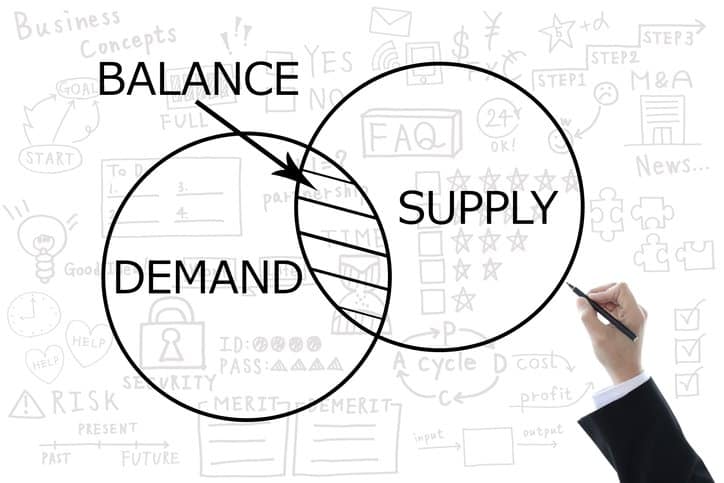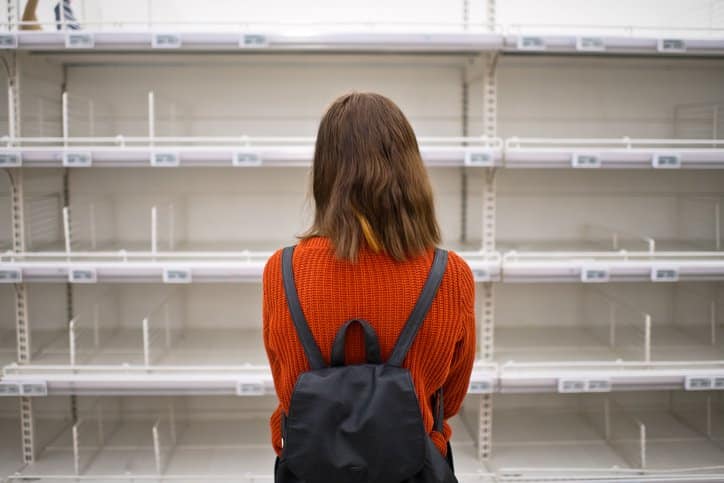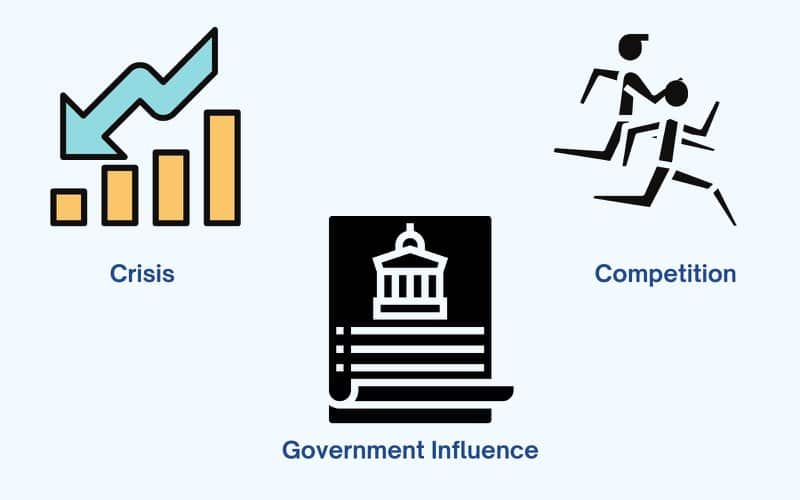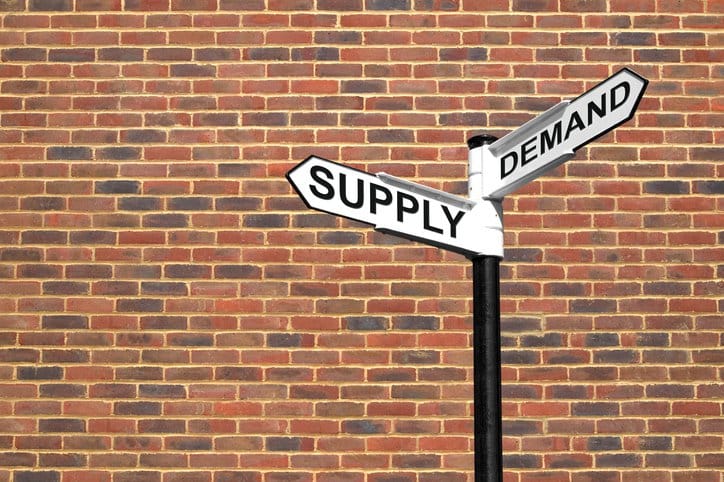A buyer meets a seller in the marketplace. Our buyer needs the product our seller has to offer. So, we have both supply and demand. But wait, the buyer and seller could not agree on a price. The buyer walked away, leaving the seller wondering about his pricing strategy. This example is essential for understanding the market clearing price. It tells us how price can influence the balance between demand and supply.
Price is the money consumers pay for a product or service. But it doesn’t always have to be money that a consumer pays. Like bartering system is an exchange of goods or services in return for goods or services. Also, price is a market variable that keeps changing.
Another name for the term is the Equilibrium price. To understand what equilibrium price is, we need to know what market equilibrium is. So, let’s find out! In this article, we will talk about the market clearing price.
Before moving forward, let’s give a brief explanation of it:
A market clearing price is the financial value of a good or service when the quantity supplied is the same as the quantity demanded. The market clearing price is also known as the equilibrium price.
What Is Market Equilibrium?

Market equilibrium is when the quantity of goods supplied equals the quantity demanded. In other words, it is when the supply and demand balance each another.
Economist Adam Smith believed that a free market always trends towards equilibrium. But one must note that a market never starts in perfect balance.
In the beginning, there is always a disharmony between supply and demand. The supply is either more or less than the demand. Then the price changes bring the market into equilibrium. And the price at which the supply of a product equals its demand is the market clearing price.
It is the price at which the market achieves equilibrium. Hence, we also call it the equilibrium price.
When the Price Is Above the Equilibrium Price

When the price is above the equilibrium price, the supply is more than the actual demand. The quantity supplied far exceeds the quantity demanded. And what happens when the supply is more than the demand?
Yes, you got it right; we see a surplus.
Why does this happen? It is because fewer buyers are willing to buy that product at that particular price. As a result, companies see their goods going unsold. Their shops start getting overstocked with these goods.
To sell these goods, they lower the prices. As the prices of these unsold goods go down, we see a rise in their demand. The season-end mega sales are good examples of companies lowering prices.
Now, more people are willing to buy these products at the discounted price.
The price of these products keeps going down until supply equals demand. When it reaches the market clearing price, there is no surplus left.
The market achieves equilibrium, and buyers purchase all the unsold goods.
When the Price Is Below the Equilibrium Price

When the price is below the equilibrium price, the supply fails to keep up with the demand. The quantity demanded exceeds the quantity supplied. And when the demand is more than the supply, we see a shortage of goods.
Why does it happen? It is because more and more buyers want to buy that product at that price. And the production of goods fails to match it.
Soon, companies see all their goods getting sold out. As a result, we see these goods getting out of stock. And there are still people waiting to buy them.
Companies realize that they cannot satisfy the huge demand. They respond by increasing the prices to tackle the shortage. As the prices go up, there is a decrease in demand. Now, fewer people want to buy that product at the increased price.
The price of these products keeps moving up until the demand comes down and equals supply. When it reaches the market clearing price, there is no shortage of goods. The market achieves equilibrium, and we now have the perfect supply-demand balance.
As we can see, price plays a vital role in determining the supply-demand balance. And price change will occur whenever supply and demand don’t match.
Whenever the price is below (or above) the equilibrium price, we will see price changes. And it will continue until supply equals demand. When we have equilibrium, there is no upward or downward pressure on the price. Meaning there is no need for companies to change prices.
Market clearing price gives the perfect balance to the market. But what happens when the market achieves equilibrium? Let’s find out! Is it essential for the supply and demand to reach a balance? Why is it an outcome to desire?
Why Reaching the Market Clearing Price Is Important?
You must ask why is it essential for the market to reach equilibrium? And what happens when supply and demand are not at a balance. Well, let’s start by looking at it from the consumer’s perspective. And then, we will talk about what problems it can cause for sellers.
As discussed above, when the price is below the equilibrium price, we see a shortage of goods. And the shortage of goods does two things:
- Not all buyers will get the goods, and their needs will remain unfulfilled. And as consumers, don’t we all hate it when something we want to buy goes out of stock.
- From the seller’s perspective, their goods get sold out. As a result, they fail to fulfill the needs and wants of a considerable number of their customers. Ask any business owner; the last thing they want is failing to provide what their customer needs.
In a nutshell, the shortage of goods stops the market from functioning correctly. After all, a lot of consumers go home empty-handed. And this will continue to happen if no price change occurs. There will always be some goods in the market that are out of stock.
Similarly, when the price is above the equilibrium price, goods go unsold. This is what happens:
- Fewer buyers are willing to buy that product at a higher price. And it results in shops getting overstocked with unsold goods, and the market is in disequilibrium.
- When the goods are not being sold, it can result in unfair trading, reduced profits, economic losses, unemployment, and wage cuts, dysfunctioning the whole system.
That’s Where Price Change Comes In
In either case, the market fails to function properly. And that’s where price change comes in to help the market reach equilibrium.
It helps create a balance between demand and supply. And at the market clearing price, the demand is a perfect balance with the supply.
As a result, there is no longer any shortage of goods. Buyers come to the market and get the products they are looking for. Also, sellers can avoid overstocking, and goods don’t go to waste. In other words, there are neither unsatisfied buyers nor any wastage. It is a suitable situation for both sellers and buyers.
Factors That Affect the Market Clearing Price

Some factors have a constant effect on the market clearing price. These can be external factors or competition within the market. After all, the equilibrium price hardly remains constant. Let’s explore some of these factors:
Crisis
Several different factors affect market equilibrium. But a crisis can put any market into complete disarray. We can take the Covid-19 crisis as an example. It has made changes to the supply and demand of various commodities.
A crisis is an unintended factor that affects market clearing price. It is different from the usual interaction between supply and demand. A situation like Covid-19 has a direct effect on supply and demand. As a result, the market clearing price also changes.
Competition
The competition in every industry also affects the price. And because it affects the price, it affects the market equilibrium. Companies use low-cost and high-cost pricing strategies. And both these strategies disturb the supply-demand balance.
The disturbance in the supply-demand balance makes way for further price change. The market clearing price either drops or increases. And the trend continues until the market reaches equilibrium.
Changes in consumer preferences also disbalance supply and demand. That’s why companies keep improvising their pricing strategy.
Government Influence
The free market theory champions little or no government influence. But the government occasionally intervenes in how the market functions.
For example, the government can raise taxes on unhealthy products like Cigarettes. They do it to discourage buyers from consuming these products. And this has a direct effect on the market clearing price of these products.
Sometimes citizens want the government to regulate prices. And the government sets a ceiling and a floor on the price. They determine how high or how low prices of different products can go. For example, the government sets a price ceiling to help people who get a relatively high price.
Reaching Market Clearing Price
By now, we know how significant price changes are for the market. Adam Smith said that a free market will always move towards equilibrium. And it happens because the lack of balance between supply and demand makes way for price changes.
And finally, the price settles at the market clearing price!

Ranu Kumari is a Professional Writer and a Marketing enthusiast who currently runs her own Marketing Consultancy, LatitudeBOX. She has written promotional articles for multiple brands and has published her work in Scopus indexed journals. She is passionate about expressing her thoughts and ideas to connect with her readers in a voice that they understand.
